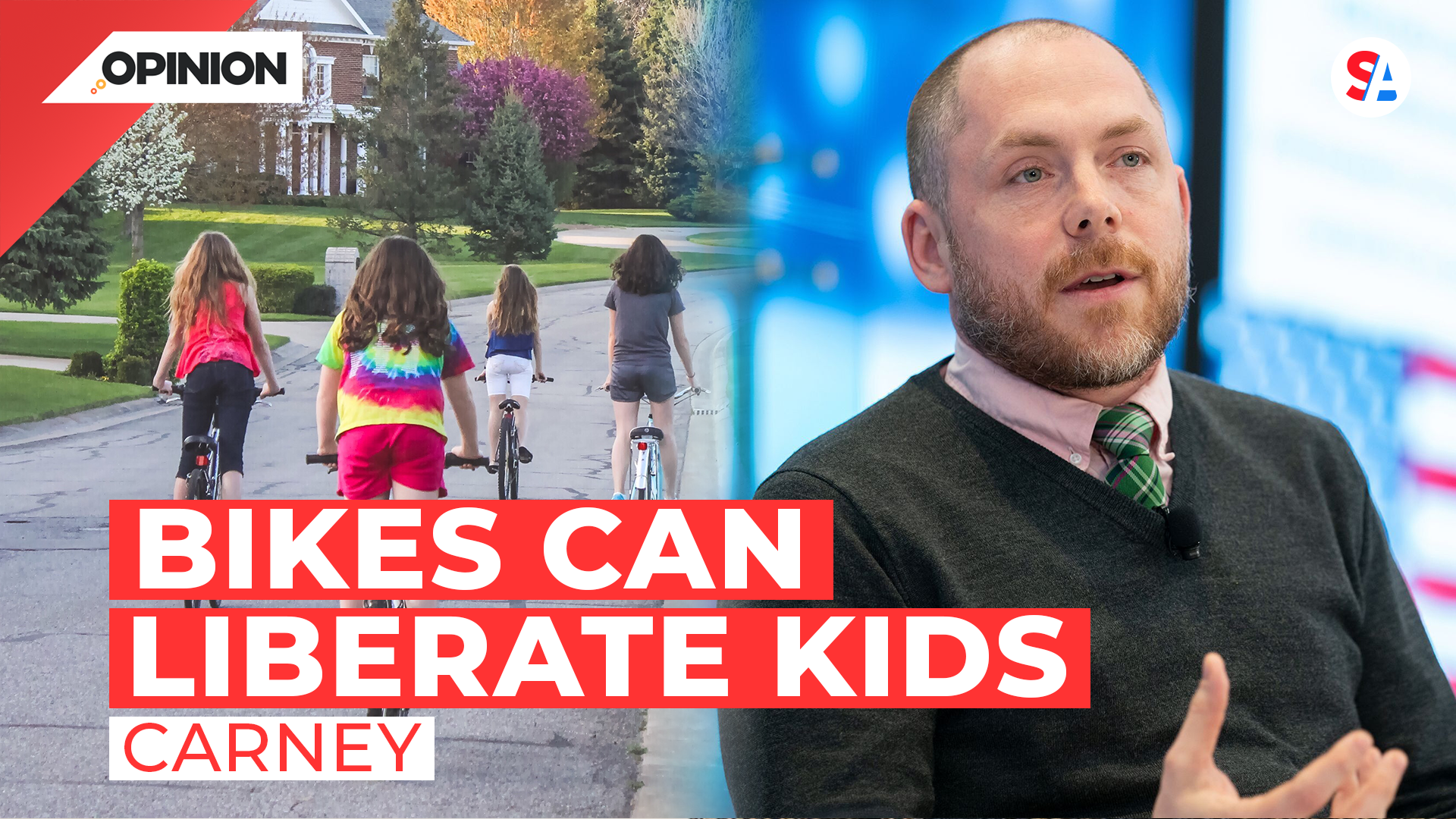
Commentary
-
Our commentary partners will help you reach your own conclusions on complex topics.
Walkability. Bikeability.
If a politician or commentator uses those word in America today, he or she is probably a liberal. But conservatives ought to care about walkability and bikeability too. The cyclist lobby was on Capitol Hill this Spring pushing the pro-bike cause. Their agenda included a federal tax credit for battery powered e-bikes.
Now, that makes no more sense than tax credits for electric cars. The tax code should not favor expensive electrified bikes over other purchases a family might make. But the other item on the bike lobbyists’ agenda was a policy proposal that conservatives should embrace: Using federal transportation money to build better and safer infrastructure for bicycles.
Millions of Americans ride bikes. Some ride bikes just for exercise. Others use their bikes to get to work or go shopping. These activities may or may not appeal to you, but how about a family bike ride, where Dad takes the kids out on a Saturday outing?
Or better yet, take Mom or Dad out of the picture. If you are Gen X or older, you probably remember the days of your youth, wandering around the neighborhood on foot or on bike until the street lights came on. These days kids walk much less than we did, and they bike less, too. Take getting to school, for example. In 1969, more than 40 percent of American school kids walked or biked to school, according to survey data. By 2016, that number was about 10 percent. Today, parents are stuck taking kids everywhere they want to go. That is not pro-family.
Improved bike and pedestrian infrastructure is pro-family because it liberates kids. It makes it easier for Susie to get herself to soccer practice, or Joey to roam the town with his buddies. We should be doing whatever we can to make parenting easier these days — liberating kids will liberate parents.
Why should the government be involved? Because transportation infrastructure is inherently a governmental responsibility. Just as governments pave roads, and lay train tracks, they also pave sidewalks and paint crosswalks. Bike lanes and bike trails fit into this network of thoroughfares that different people use to get around. Making these trails safer is a legitimate government role. That could include building connectors between different trails or making safer crossings over major roads. It could include more robust dividers between car and bike lanes.
More governments should be spending more for pedestrians, too. I live in the suburbs outside of Washington, D.C. Many blocks have no sidewalks at all. Many roads are wide and fast, and the crosswalks are few and far between. That’s a world built for cars and a place built for cars is not built for humans. Which is why, in my old Wheaton-Glenmont neighborhood, pedestrians regularly were hit and killed by cars.
Even if you don’t care about curbing carbon emissions, and even if you love driving your car, you should want to spend our transportation money on making it safer for kids and adults to get around on foot and on bike, because it’s good for community and good for families.
-
Anti-deportation protests across US will hurt immigrants
On Feb. 2, thousands of protesters waving Mexican, Guatemalan and Salvadoran flags marched through downtown Los Angeles, shutting down the freeway in protest of Trump’s deportation plans. In Phoenix, Arizona, protesters rallied at the state capitol and outside federal immigration offices. Similar grassroots demonstrations are unfolding across the country in the early weeks of Trump’s… -
How woke Democratic policies are fueling devastating wildfires
With at least 25 people killed and fires still burning in Los Angeles, some are accusing politicians of mismanaging resources and worsening the crisis. President-elect Donald Trump has blamed California Gov. Gavin Newsom, a Democrat, claiming he is responsible for a low water supply, although city officials rebuked that allegation and have clarified that the… -
Democrats, GOP must urgently cooperate to block Trump tariffs
Incoming U.S. President Donald Trump has pledged sweeping tariffs on U.S. imports from around the globe, including from U.S. neighbors and allies, but especially on Chinese goods. Trump contends that his tariffs, while initially shocking the U.S. and global economies, will ultimately be good for the long-term economic health of the United States. But economists… -
Why Democrats have soured on mail-in voting
Over 4 million Georgians voted early in the U.S. 2024 presidential election, including a significantly higher number of Republicans than in 2016 or 2020, and many of them chose to do so by mail. The Georgia secretary of state’s office said that this early voting was unprecedented, representing 56% of all registered Georgia voters and… -
Child car seat regulations might actually be impacting family planning
U.S. Sen. JD Vance, R-Ohio, claimed in March of 2023 that child car seats are prohibiting many American families from having more children. Critics noted that birth rates are declining all around the world — including in countries where families don’t normally own any car at all — and that the cost of raising a…
Latest Opinions
-
 Getty Images
Getty Images
How Mixue surpassed McDonald’s and Starbucks in locations with unique model
-
 Getty Images
Getty Images
How Texas aims to rename New York Strip steak to promote beef industry
-
 NONSTOPNEWS
NONSTOPNEWS
At least 2 dead, dozens injured as driver rams into crowd in German town
-
 @jasvnalvar/TMX
@jasvnalvar/TMX
FedEx cargo plane catches fire after bird strike, makes emergency landing
-
 Reuters
Reuters
Violence in Haifa: 1 killed, 4 wounded in bus stabbing attack
Popular Opinions
-
In addition to the facts, we believe it’s vital to hear perspectives from all sides of the political spectrum.






